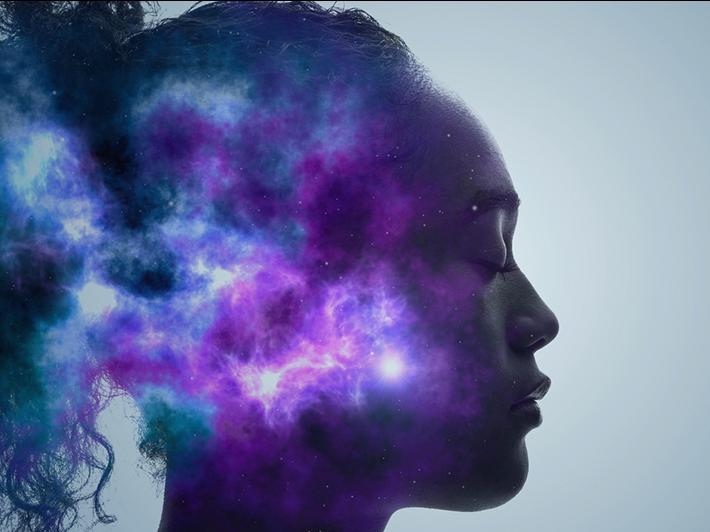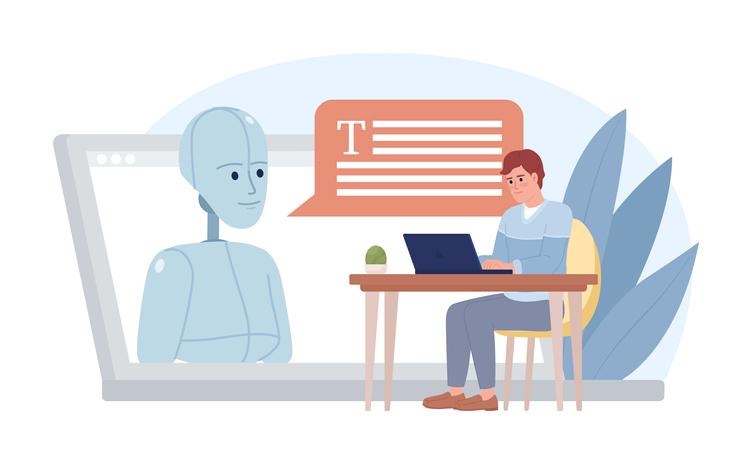
‘Generative AI is making our students more creative than ever’

While much of the discourse on generative AI (GenAI) in academic circles focuses on whether it can be creative, something more interesting is happening in my seminars for master’s in digital communication management: students are using GenAI to become more creative themselves. It’s not about AI replacing human creativity; it’s about how writing prompts for AI is becoming a new form of creative expression. Every time a student crafts a prompt, they’re engaging in an act of imagination that our traditional education system rarely demands.
When students write prompts for large language models (LLMs), they’re engaging in a creative process. They must envision possibilities, set goals and imagine outcomes – exactly the skills we want them to learn. An experiment for using AI to promote divergent thinking shows that human imagination was used to envisage capabilities when designing a crab-inspired toy using a GenAI video model. Such systems help us craft elaborate scenarios, and each prompt can represent a creative leap that pushes boundaries of conventional thinking.
- Resource collection: AI transformers like ChatGPT are here, so what next?
- Spotlight guide: Creativity in higher education
- Opinion: ‘Creativity is a practice, not an astonishing stroke of good luck’
Creative prompt engineering isn’t limited to design. Consider how media students are using GenAI to revolutionise their storytelling approach, advertisements and press releases; explore scenarios, unconventional consumer profiles and positioning strategies; or simply play devil’s advocate. They’re using it as a collaborative brainstorming tool and for developing ideas. For example, a student used it to explore multiple perspectives for an advertising campaign. When one of our PR students crafted prompts to explore scenarios such as a drought-stricken future or contexts for marketing a luxury brand, she started with an observation or a problem, generating multiple possible explanations and approaches, and seeking the most plausible option.
This process demonstrates what philosopher Charles Sanders Peirce understood about human creativity. When theorising abductive reasoning, which is the process of creative exploration, Peirce argued that imagination is central to how we think and generate new ideas. When the student asked: “What if sustainability wasn’t the main selling point?”, she was making creative leaps to generate new hypotheses.
Our students are not just getting answers from AI, they’re exploring possibilities in ways we’ve never seen before. The most creative work doesn’t come from students who write simple prompts such as: “Paint a sunset.” It comes from those who, like our PR student, imagine complex scenarios that combine unexpected elements and perspectives.
The process of prompt engineering itself becomes a form of abductive reasoning where each prompt is a hypothesis about what might work best, and each AI response helps refine these hypotheses towards the most plausible solution. Writing prompts for AI is an act of transforming mental possibilities into tangible outputs. When crafting prompts for text, images or videos, we first imagine abstract potentials – scenarios that exist only in our minds. We then translate these imagined possibilities into precise instructions that AI can interpret. The fascinating part isn’t the AI’s output but how we bridge the gap between pure imagination and more concrete reality. Through careful prompt engineering, we’re teaching machines to understand and manifest our mental constructs, turning abstract thoughts into words, visuals and moving images that others can experience.
Yes, AI has limitations. Yes, its knowledge can become outdated. But these limitations are precisely what make it a tool for creativity rather than a replacement for human thought. Students must learn to work around these limitations, to understand both the possibilities and constraints of the technology. This understanding itself becomes a form of creative problem-solving.
The real opportunity here isn’t about automating creativity, it’s about democratising innovation. Students who might lack technical expertise can still identify novel ideas and approaches. While GenAI provides the technical knowledge, students must exercise creativity to co-create their vision through the lens of AI. This collaboration between human imagination and artificial intelligence is creating new forms of creative expression we’re only beginning to understand, which recalls literary scholar Yuri Lotman’s concept of semiosphere, a complex and evolving system of interaction of sign processes, meaning and interpretation.
For educators, this presents a challenge and an opportunity. The question isn’t whether AI belongs in education – it’s whether we’re ready to embrace a new kind of creative thinking. Our students are already showing us the way. They’re using AI not as a shortcut but as a tool for expanding their creative horizons. The academic community needs to catch up, moving beyond debates about AI’s capabilities to understand how it can enhance human creativity.
The future of education isn’t about AI creating content – it’s about students becoming more creative through their interaction with AI. It’s time for our teaching practices to reflect this reality. One way to do this is to embrace GenAI as a collaborative partner and facilitate GenAI-enhanced project-based learning by designing projects relevant to real-world issues that allow students to use it creatively.
Ramona Pistol is a semiotician and lecturer in media in the School of Creative Arts at the University of Hertfordshire.
If you would like advice and insight from academics and university staff delivered direct to your inbox each week, sign up for the Campus newsletter.


